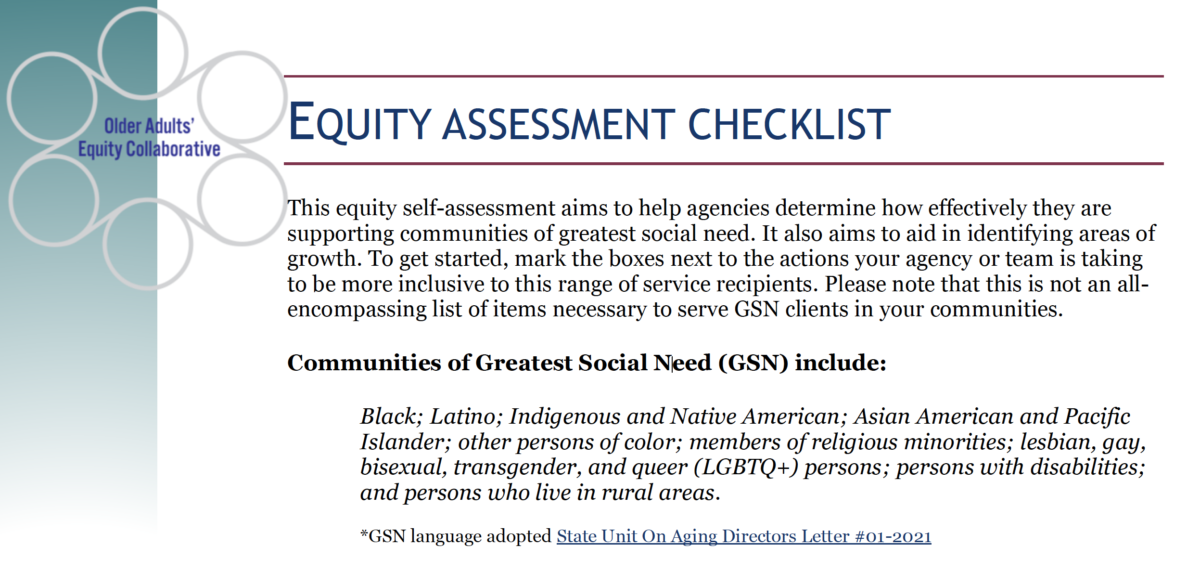Read More
Since 2020, the Administration for Community Living (ACL)-funded Older Adults’ Equity Collaborative (OAEC) has worked to elevate cultural competence in the aging network through active engagement with professionals, caregivers, and older adults. This capstone event will reflect on the accomplishments of this collaborative by introducing attendees to the resources and tools generated by the OAEC and look ahead by stimulating conversation on the future of equity in the aging network.
Read More

This equity self-assessment aims to help agencies determine how effectively they are supporting communities of greatest social need (GSN). It also aims to aid in identifying areas of growth. To get started, mark the boxes next to the actions your agency or team is taking to be more inclusive to this range of service recipients.
Read More
Cultural norms and values can impact the way Hispanic/Latino caregivers care for their loved ones. This series of worksheets and accompanying videos was created in collaboration with our partners at Trualta. They are designed for caregivers to identify how cultural values and norms affect their caregiving, help identify which values are important to them, and ways to implement those values in their daily lives as caregivers. Each worksheet has an accompanying video which features interviews with actual caregivers sharing their experiences to help reflect on how different values affect caregiving, and guidance on how these values can also help self-care for caregivers.
Read More
Black and Aging in America© presents summaries, statistics, and perspective on the status of Older African Americans. By examining social, economic, health and other indicators, in comparison to other racial and ethnic groups, this report illustrates progress as well as the many challenges that remain.
Some organizations, academic studies, and government agencies consulted for this report define seniors as over age 55. However, unless otherwise noted, this report reflects information on the 65-and-older cohort. Black and Aging in America© condenses this broad spectrum of information into one simplified presentation—a readily accessible portrait of the status of Older African Americans.
Read More
California’s vision of equity in aging is to transform every person’s older years into their golden years. To achieve this vision, the California Department of Aging (CDA) works to ensure that all Californians have access to opportunities and services to age how and where we choose - regardless of age, disability, race, ethnicity, immigration status, religion/faith, income, geography, sexual orientation, gender identity, language, or family status. CDA’s programs, planning, and partnerships aim to do the following:
Read More
American Indian, Alaska Native, and Native Hawaiian (AI/AN/NH) communities face significant health disparities compared to the general United States population. Specifically, Elders manage a high burden of chronic conditions and report the greatest percentage of falls (34.2%) of all races and ethnicities. In an effort to address these disparities, some organizations serving AI/AN/NH Elders have implemented evidence-based health promotion programs in the community to empower individuals to manage chronic conditions and prevent falls.
Read More